In decades past, gas was provided to buildings in individual LP gas containers. While this still exists in the countryside, at remote structures, and in some traditional markets, the system has been almost completely replaced with gas pipes laid under city streets. Here is a picture of a LPG canister delivery truck.
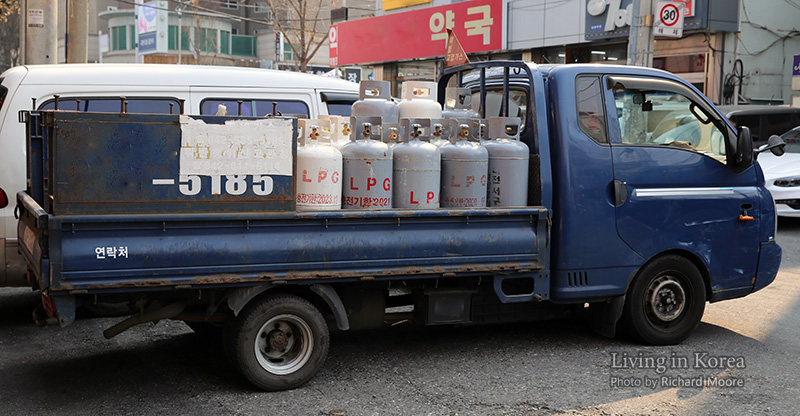
Building have one central hookup and then is spread throughout the building. Gas is sold by Korea City Gas Association (한국도시가스협회, 韓國都市가스協會, Hanguk Dosi Gaseu Hyeopoe) and known as City Gas for short (도시가스, 都市가스, dosi gaseu). Sometimes the gas line is visible from the street. When this is the case it is frequently wrapped in a protective metal shell in case a vehicle bumps it while parking.
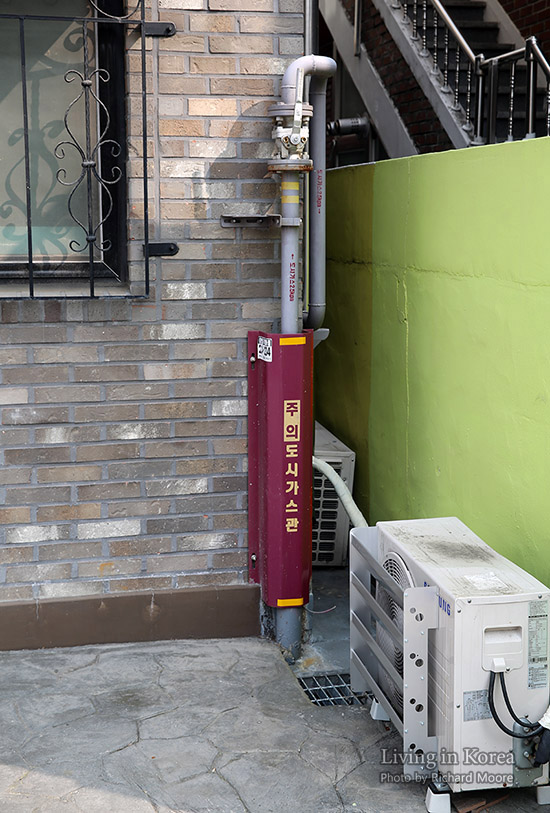
If you go around the corner, you can see individual meters for residents. While these are located outside, they might alternatively be located indoors, frequently in an enclosed veranda.
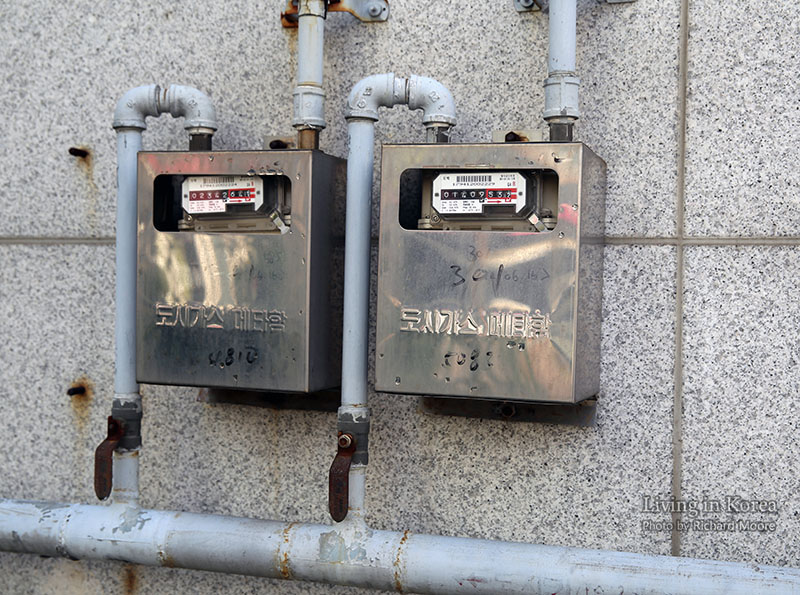
Occasionally you’ll see these little metal circles on the road which indicate where utility lines are buried. If you follow them you might see a connection at a building. This one mentions 도시가스 (都市가스, dosi gaseu) which means gas lines. Similar markers exist for telecommunication and water lines.

To use gas in your home, you must contact City Gas for hookup. A service person will come to your home to complete the hookup, check for gas leaks during the year and certify the line is safe, and will disconnect you when you move out. English service does not currently exist, so you’ll need help contacting the company to get started. Their website is www.citygas.or.kr (Korean) and you will need a Residence Card or a passport for billing purposes.
Every six months or once a year, the gas company will send out staff to visit homes and check there are no gas leaks. Staff wear a vest which declares their purpose and they'll hand carry a few items into your home to check the stove connection in your kitchen isn't leaking. If everything is good, they'll post a sticker on the pipe near the shutoff knob stating the connection is safe.

The gas meter might be in your home in the veranda next to your kitchen or might be outside. Here is an image of one inside of a home in the enclosed veranda. If you want a closer look, click the image to see a larger size.
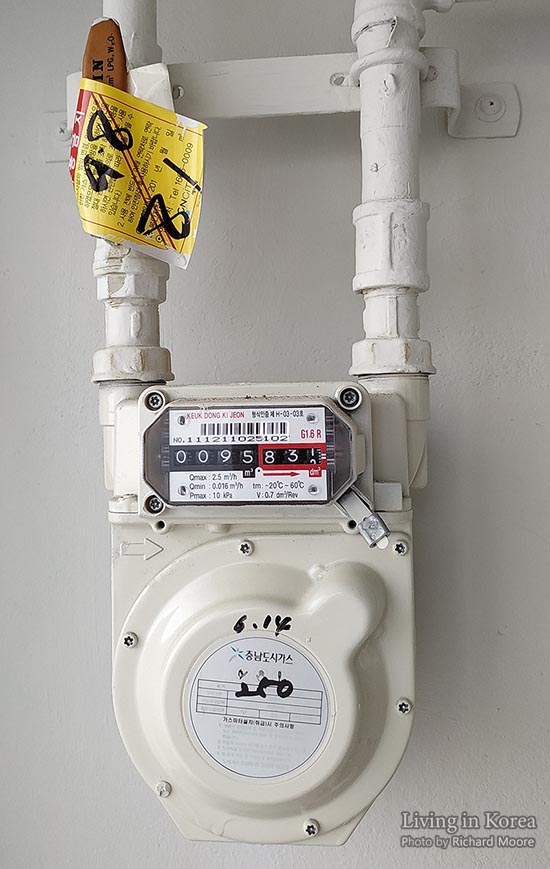
The problem with meters located within a residence is the added difficulty for the gas company to check your gas usage and adequately bill you for the gas that you used. Here is a notice telling residence that someone will come and record the gas usage on the 9th (9일) and asks everyone to check their meters and write the usage information on the chart by their front door by the 8th (8일까지기록!). If you want a closer look, click the image to see a larger size.
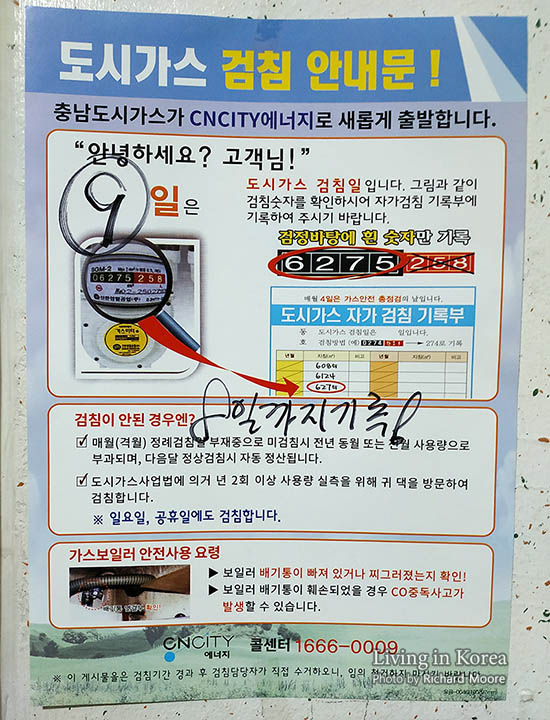
Here is where you will write down the gas usage if your meter is located within your home. This will be located just next to your front door. The top of this is unfortunately covered with advertisements for locksmiths or other services, so the title cannot properly be seen.
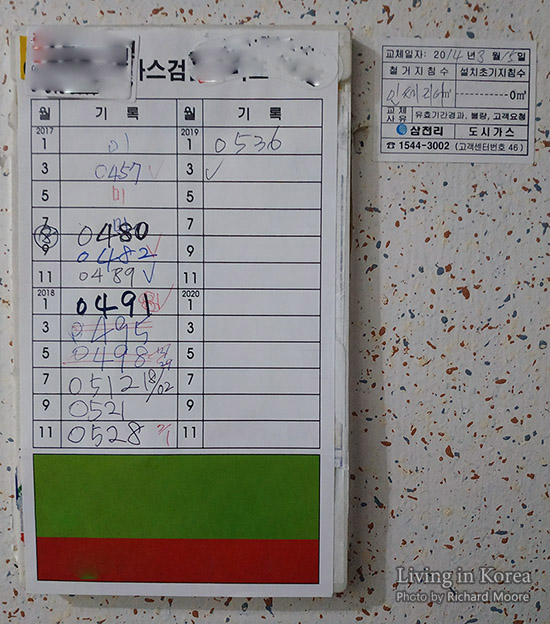
People are busy with work and life and so it can be difficult for the gas company to gain entry to a home when they need to. If they stopped by your home but no one answered the door, they will leave a memo stating they wish to check and a phone number they can be reached at.

Here is a picture of just the note in case you want to more easily read it. Near the bottom will be a phone number you can contact them at and has been removed for legal reasons. If you want a closer look, click the image to see a larger size.
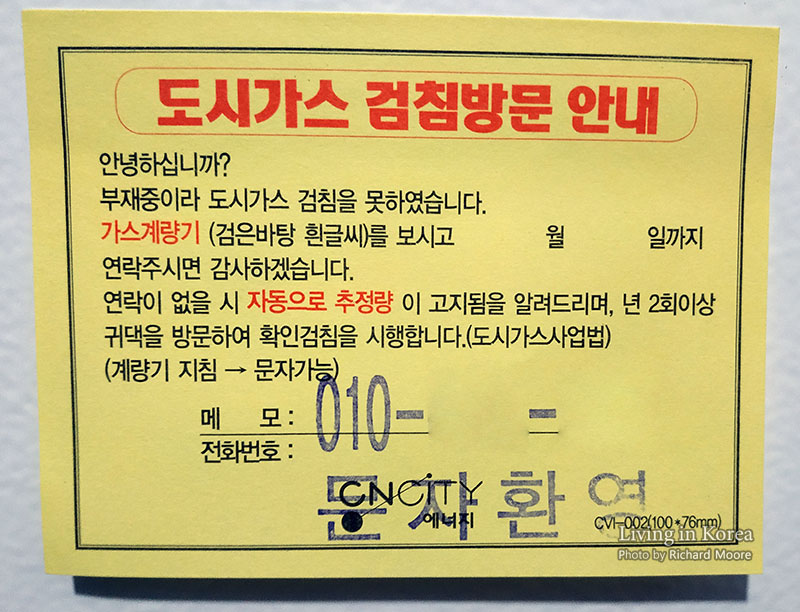
When moving out of a residence, you’ll need to contact the gas company before you leave. Part of this is to pay your bill up through the moving date, and they will also disconnect the gas if the next resident is not moving in that day. When you are moving, make sure you keep more cash on you than you think you’ll need as unexpected things can happen, including paying some final utility bills you didn’t think about.